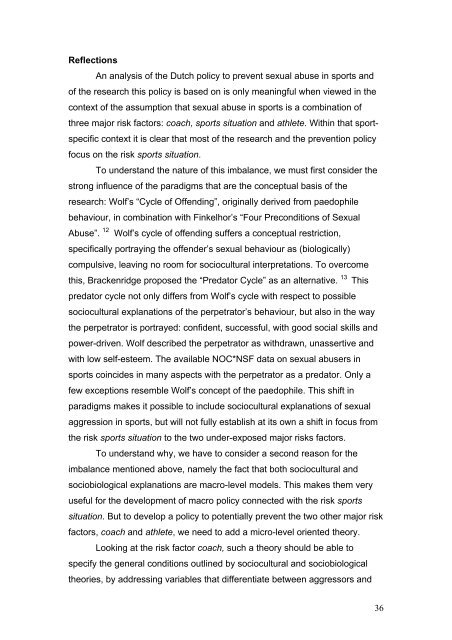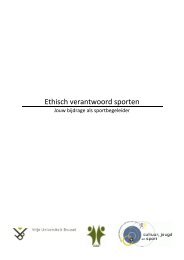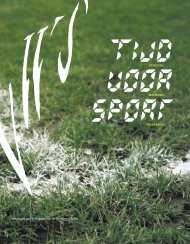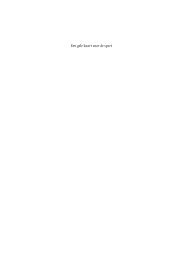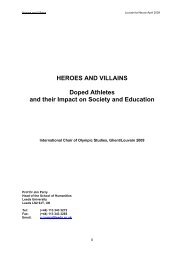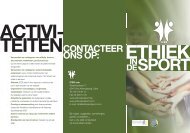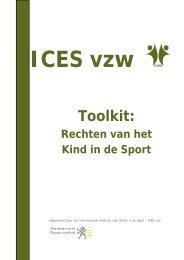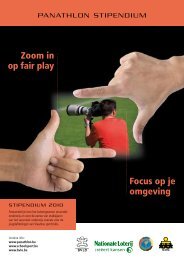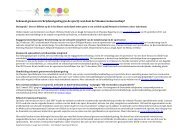Part 3 GLOBAL ISSUES: HARASSMENT AND ABUSE RESEARCH
Part 3 GLOBAL ISSUES: HARASSMENT AND ABUSE RESEARCH
Part 3 GLOBAL ISSUES: HARASSMENT AND ABUSE RESEARCH
Create successful ePaper yourself
Turn your PDF publications into a flip-book with our unique Google optimized e-Paper software.
Reflections<br />
An analysis of the Dutch policy to prevent sexual abuse in sports and<br />
of the research this policy is based on is only meaningful when viewed in the<br />
context of the assumption that sexual abuse in sports is a combination of<br />
three major risk factors: coach, sports situation and athlete. Within that sportspecific<br />
context it is clear that most of the research and the prevention policy<br />
focus on the risk sports situation.<br />
To understand the nature of this imbalance, we must first consider the<br />
strong influence of the paradigms that are the conceptual basis of the<br />
research: Wolf’s “Cycle of Offending”, originally derived from paedophile<br />
behaviour, in combination with Finkelhor’s “Four Preconditions of Sexual<br />
Abuse”. 12 Wolf’s cycle of offending suffers a conceptual restriction,<br />
specifically portraying the offender’s sexual behaviour as (biologically)<br />
compulsive, leaving no room for sociocultural interpretations. To overcome<br />
this, Brackenridge proposed the “Predator Cycle” as an alternative. 13 This<br />
predator cycle not only differs from Wolf’s cycle with respect to possible<br />
sociocultural explanations of the perpetrator’s behaviour, but also in the way<br />
the perpetrator is portrayed: confident, successful, with good social skills and<br />
power-driven. Wolf described the perpetrator as withdrawn, unassertive and<br />
with low self-esteem. The available NOC*NSF data on sexual abusers in<br />
sports coincides in many aspects with the perpetrator as a predator. Only a<br />
few exceptions resemble Wolf’s concept of the paedophile. This shift in<br />
paradigms makes it possible to include sociocultural explanations of sexual<br />
aggression in sports, but will not fully establish at its own a shift in focus from<br />
the risk sports situation to the two under-exposed major risks factors.<br />
To understand why, we have to consider a second reason for the<br />
imbalance mentioned above, namely the fact that both sociocultural and<br />
sociobiological explanations are macro-level models. This makes them very<br />
useful for the development of macro policy connected with the risk sports<br />
situation. But to develop a policy to potentially prevent the two other major risk<br />
factors, coach and athlete, we need to add a micro-level oriented theory.<br />
Looking at the risk factor coach, such a theory should be able to<br />
specify the general conditions outlined by sociocultural and sociobiological<br />
theories, by addressing variables that differentiate between aggressors and<br />
36


